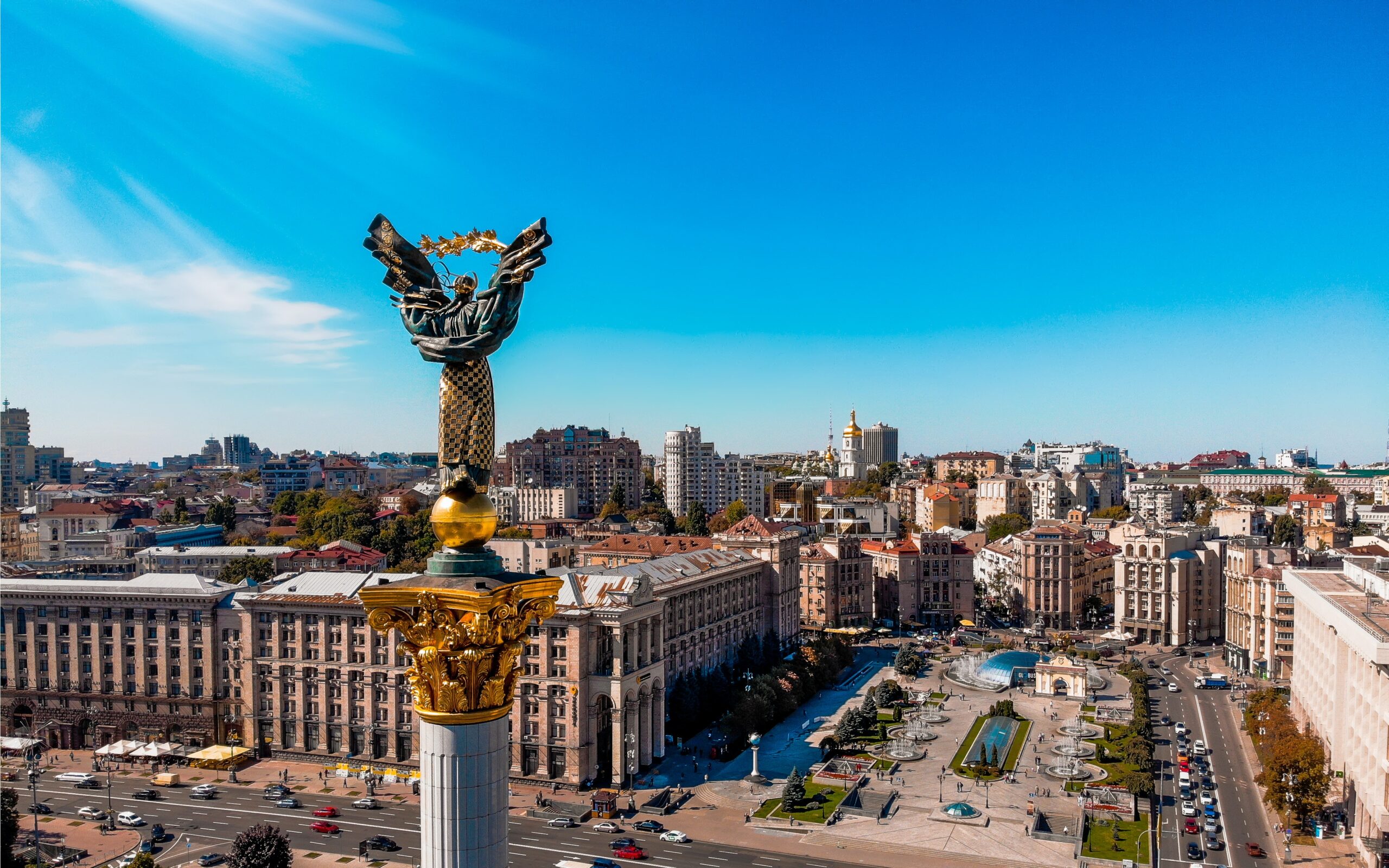What the ‘Neutralization’ of Ukraine would actually mean
By Pascal Lottaz
Photo by Glib Albovsky on Unsplash
Debates about “Ukrainian neutrality” to end the war with Russia are picking up steam in the US. After many calls from international academics, last week, a former Assistant Secretary of State, A. Wess Mitchell, published a call for Ukrainian “fortified neutrality” in Foreign Affairs—the medium where George Kennan published his famous “Article X,” in 1947. Most noteworthy: Mitchell’s article can be found before the usual paywall of the magazine. Someone seems to be paying for its circulation.
Never mind the strange name Mr. Mitchell gave to his vision of Ukrainian neutrality—what he is describing (despite denying it) is simply a version of Switzerland’s or Austria’s armed neutrality—more important is the basic idea and the way to achieve it. To end the war, what matters is the political understanding to conclude what is called a “neutralization.” Let me explain.
“Neutralization,” in this context, is a purely technical term, meaning “to make permanently neutral by way of international agreement.” It stands in contrast with unilateral declarations of neutrality like, let’s say, Mongolia, which in 2015, at the UN General Assembly, announced that it would like to be regarded as a neutral country, but has no international agreement for backing up its new status (which in the case of Mongolia doesn’t matter, because no one rejects or disputes its claim).
Neutralizations were very much en vogue back in the late 19th and early 20th centuries when the international community neutralized anything from entire states (Switzerland, Belgium, Luxemburg) to non-sovereign territories (Ionian Islands, Åland Islands, Haute-Savoie), colonies (the Congo), waterways (Panama Canal), and even infrastructure like telegraphic cables and railway lines. Basically, anything that was of international value to many parties could potentially be neutralized to make sure it would remain free and available even during interstate wars.
There is a mixed history to these neutralizations, some worked very well and are still in force today (Switzerland, Åland Islands, Panama Canal), others collapsed under external warfare or were ended when the international community frogott about them (Belgium, Ionian Islands, Haute-Savoie). However, in all cases, the neutralizations brought about at least a couple of decades of stability. The German invasion of Belgium in 1914 is often used as an example that neutrality doesn’t work, but this view tends to forget that it did work for 70 years—not an insignificant amount of time.
For Ukraine, the good news is that the so-called law of neutrality that governs this part of international law is out there and ready to use. It hasn’t been applied for half a century—the last famous international attempt was the neutralization of Laos, in 1962—but brush off the dust and go for it, neutrality law has never been revoked.
The content of a neutralization can be very flexible and is up to the actual agreements made between the parties. They can or cannot include limitations on military cooperation, the use of territory, the deployment of foreign troops, or the fortification of certain plots of land (or water). However, the crux—and the power—of neutralizations is that they are multilateral agreements to which all stakeholders have to say “yes” and bind themselves to.
On the one hand, that is not easy to achieve, on the other hand, it’s a powerful outcome because a good neutralization agreement will assure that keeping the agreement alive is in the interest of all parties, which is the strongest guarantee in the intranational world for keeping any deal alive. It requires the participation of all major political stakeholders to be realistic. In the Ukrainian case, that is Moscow, Kyiv, and Washington.
Although the United States is not a direct party to the war, the core of the conflict is about the power distribution in Europe, and that one is raging between Moscow and Washington. Some observers deny this, but we know it is how Russia views the situation—that is why Moscow sent its (in)famous two draft treaties of December 2021 directly to D.C. and NATO, and not to Kyiv. That is also why the consent of the EU for the neutralization of Ukraine would be a “nice to have” but is not a must. For this deal, only the immediate stakeholders matter.
The consent of Ukraine is important because it will be tasked with upholding the neutrality agreement internally, defending it against political attacks, and live-up to the letter and the spirit of what will be concluded. Russia matters because it needs to stop the bombing and withdraw its troops to the agreed lines. The US matters because it will need to prevent the subversion of the agreement by spoilers inside Ukraine or inside the Trans-Atlantic networks that would rather see Ukraine fight the war to the end, as Afghanistan did, than go for a negotiated settlement—which would of course include devastating consequences for the civilian population, just as it did for Afghanistan.
The US will have to hold the back of the Ukrainian negotiating team, by not subverting President Zelensky if an agreement with Russia becomes likely. That was the fate of the South Vietnamese President Diem, who was assassinated by his own Generals when his secret negotiations with the North for a peace settlement became likely to succeed. It is known today that the assassination happened with the knowledge and consent of US president J.F. Kennedy (Irony of history: less than a month later, Kennedy himself was assassinated).
To succeed, the content of the neutralization must find that “goldilocks position” between the fronts, the lowest common denominator that all three parties can say “yes” to. It is nearly impossible to correctly guess what this means without access to the actual negotiations, but it will likely include some versions of the following, which, at the moment, seem to be unmovable red-lines for any of the three parties:
- Removal of NATO accession aspiration from the constitution of Ukraine and replacement with an article, promising the country’s permanent neutrality according to the Swiss or Austrian models. This includes the promise to never station foreign troops on Ukrainian soil—neither NATO nor Russian.
- Survival of the current political leadership of Ukraine and uninfluenced political elections in the future.
- Access to foreign (western) weapon systems, albeit only of defensive nature, a.k.a. no stationing of offensive military equipment.
- Removal of the Azov battalion from Ukraine’s national guard and maybe a cap on the size of the Ukrainian army, like the cap imposed on Germany during the reunification process.
- A roadmap for the reintegration of the Donbas regions into the body politic of Ukraine in conjunction with a strong federalization of the state (a revived Minsk agreement).
- The recognition of Crimea as part of the Russian Federation.
The last two points might be the most controversial. It is important though to recognize how they are different. The Donbas regions are political bargaining chips for Moscow, as their survival depends on Russia. Their reintegration into Ukraine would serve Moscow as it would all but guarantee Ukraine’s neutrality if it became a strongly federalized state where the regions have veto power over fundamental changes in foreign policy. Belgium would be the model here (in 2016 the Belgian region of Wallonia was able to temporarily block an EU–Canada trade deal). Reintegration of the Donbas into Ukraine is hence in the interest of Moscow.
Crimea is an utterly different case. I can think of no realistic scenario short of defeat in a total war under which Russia would be willing to give up the peninsula. Its entire Black Sea Fleet and regional power depend on it. Crimea is to Russia what the Golan Heights are to Israel, and it is simply not probable that either will ever return to their lawful owners without them winning a war.
A journalist recently commented to me “but that’s the status quo ante”! And she was right. It is more or less the way that Ukraine existed in the international community before everything went sour. And that is how we know it will work—because it already did. It is the status of Ukraine before 2014 when the Russian invasion of Crimea caused Ukraine to get rid of its constitutional neutrality article, and it is the status before 2008, when NATO’s declaration that Ukraine will become a member in the future rang all alarm bells in Moscow, prompting planning of the contingency measures we are now seeing unfolding.
At the end of the day, lasting peace and stability is reached by a few signatures on a piece of paper, when all relevant stakeholders say “yes” to a common vision of the future, be it a declaration of surrender (Japan in 1945), a security settlement (Helsinki Final Act of 1975), or a neutralization agreement (Austria in 1955). War is often unilateral, peace is almost always multilateral. Let’s hope for multilateralism to prevail soon.

